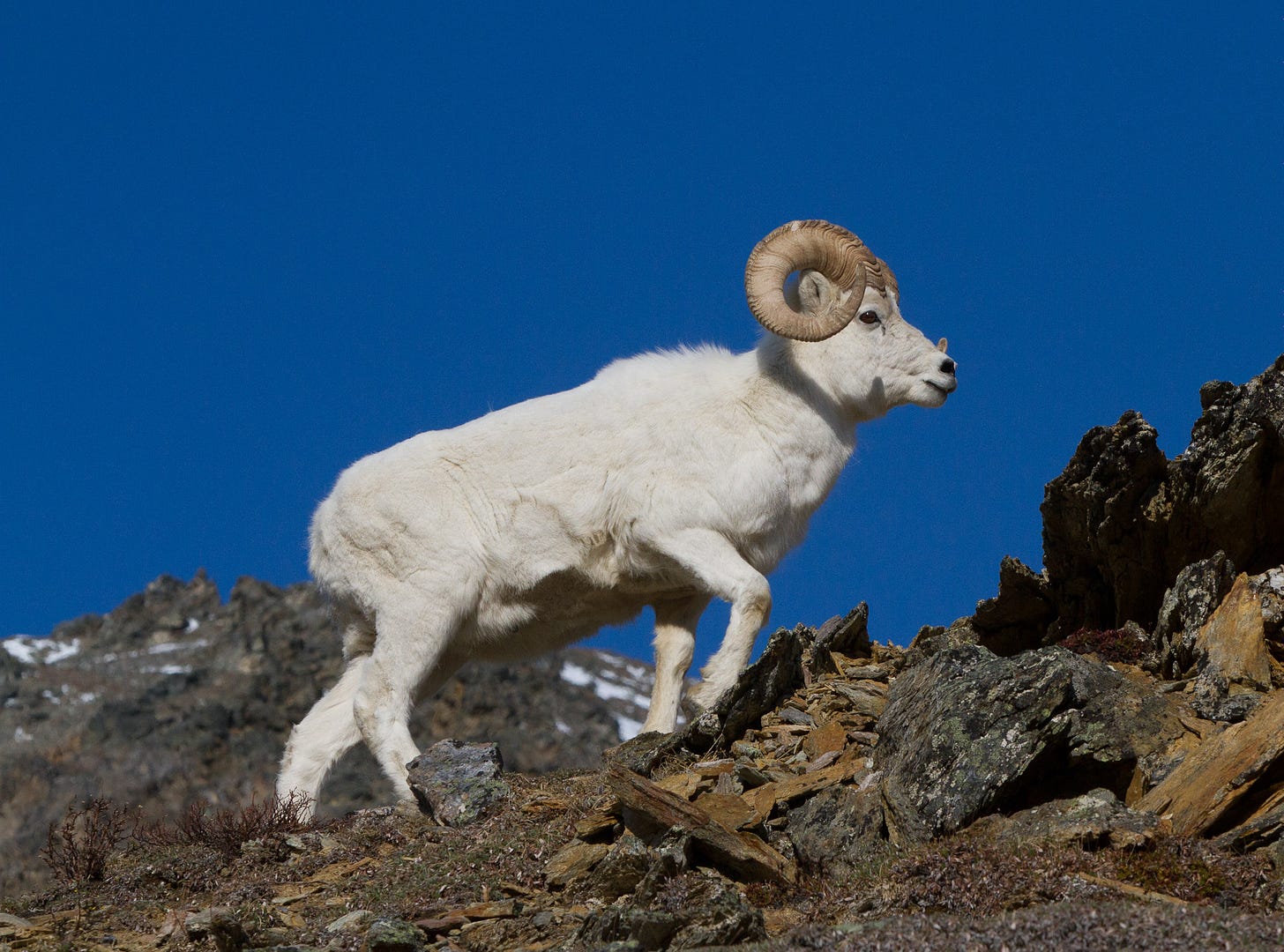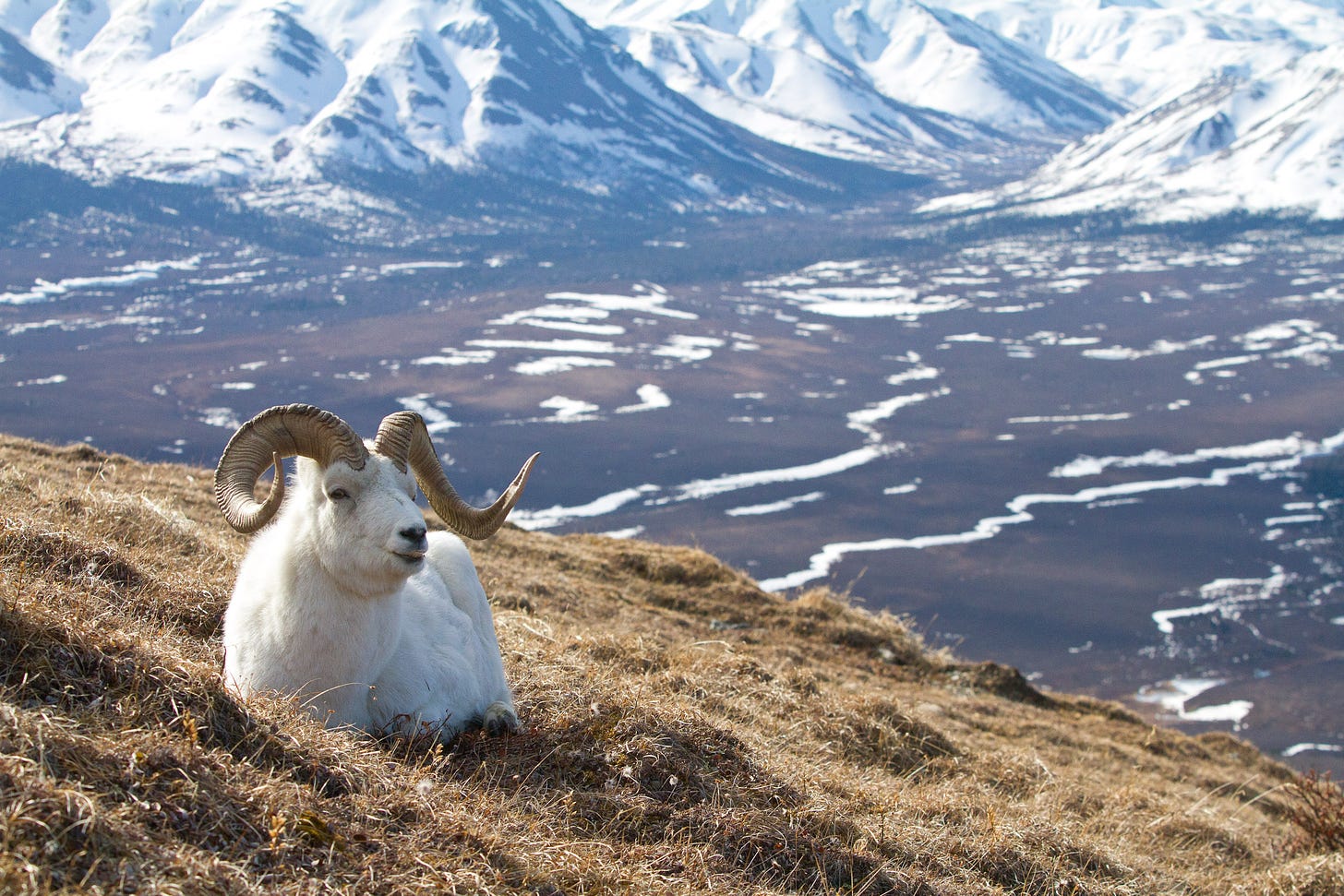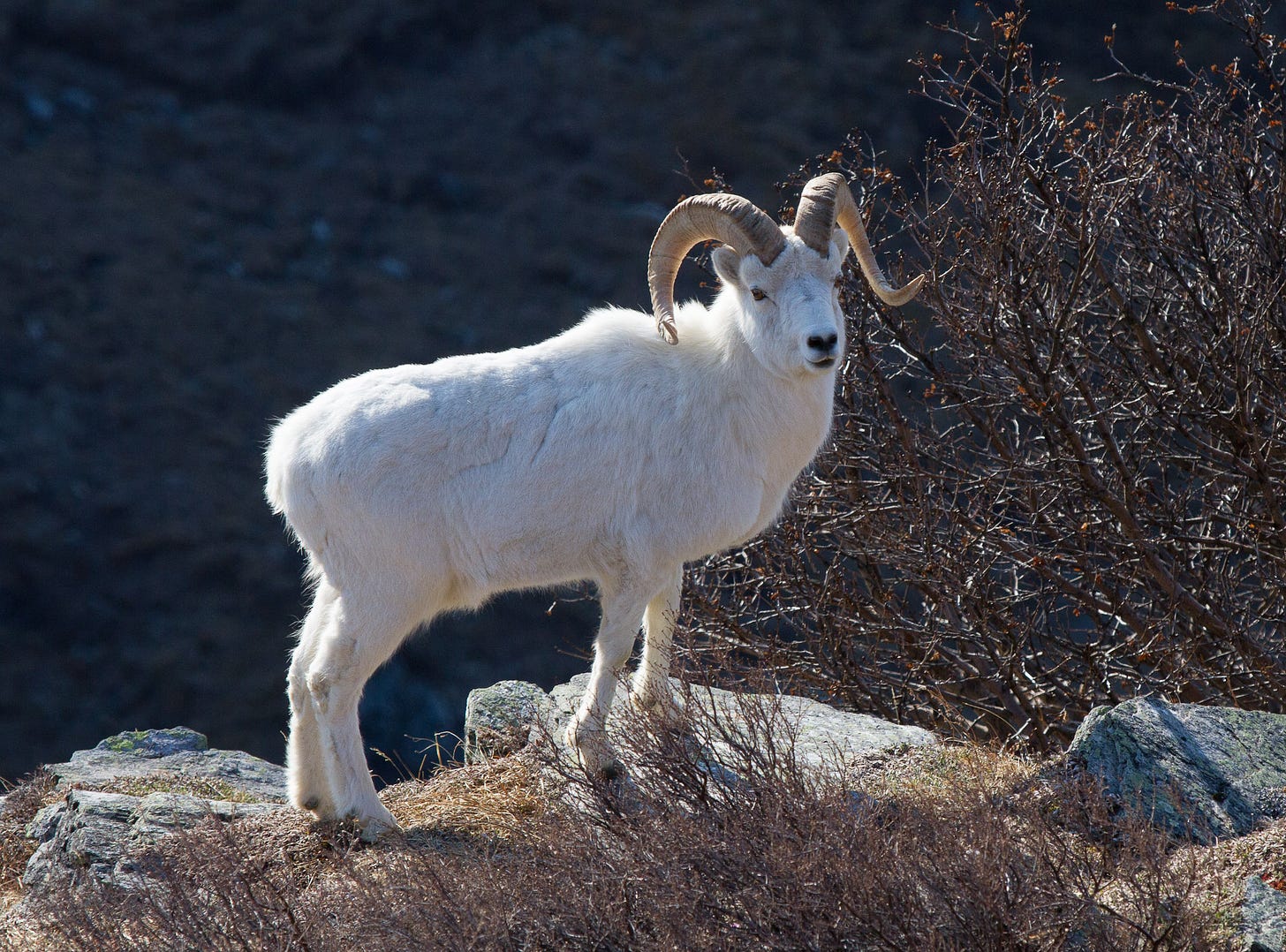By Jordan Schaul | National Geographic | May 20, 2012
The one ungulate from Alaska that is not represented in our collection at the Alaska Wildlife Conservation Center (AWCC) is the Dall Sheep or Dall’s sheep. As a rescue center, we only take in animals that were orphaned or in need of medical care, and to date, we have not received a request from the Alaska Department of Fish & Game to provide care for an orphaned or physically compromised Dall sheep. We do receive several requests a year from zoos inquiring about the availability of these mountain ungulates. One day we may exhibit them and or serve as a holding facility for zoo-destined animals.
One can see flocks of Dall sheep along the rugged, mountainous terrain while driving from Anchorage south to the tip of the Kenai Peninsula. Unfortunately, I think the enthusiasm of wildlife spectators looking for sheep descending a steep and rugged landscape to graze on the side of the road, is the cause of numerous automobile accidents. The sheep draw much attention, especially a full-curl ram, and often distract drivers.
The Dall’s sheep is not particularly threatened; it is currently designated by the International Union for the Conservation of Nature as a species of Least Concern. The game animal is found widely throughout its current range and exists in large protected areas, particularly in Alaska. In fact, Dall’s sheep occur in eight federally protected areas in the state. Outside of Alaska, the Dall’s sheep is found only in Canada (i.e., British Columbia, Yukon, and Northwest Territories).
Below are some photos of Dall’s sheep by Doug Lindstrand, an acclaimed wildlife photographer, author, and illustrator, and the AWCC’s own staff photographer.
ABOUT NATIONAL GEOGRAPHIC SOCIETY
The National Geographic Society is a global nonprofit organization that uses the power of science, exploration, education and storytelling to illuminate and protect the wonder of our world. Since 1888, National Geographic has pushed the boundaries of exploration, investing in bold people and transformative ideas, providing more than 14,000 grants for work across all seven continents, reaching 3 million students each year through education offerings, and engaging audiences around the globe through signature experiences, stories and content. To learn more, visit www.nationalgeographic.org or follow us on Instagram, Twitter and Facebook.
MEET THE AUTHOR
Jordan Carlton SchaulWith training in wildlife ecology, conservation medicine, and comparative psychology, Dr. Schaul's contributions to Nat Geo Voices have covered a range of environmental and social topics. He draws particular attention to the plight of imperiled species highlighting issues at the juncture or nexus of sorta situ wildlife conservation and applied animal welfare. Sorta situ conservation practices are comprised of scientific management and stewardship of animal populations ex situ (in captivity / 'in human care') and in situ (free-ranging / 'in nature'). He also has a background in behavior management and training of companion animals and captive wildlife, as well as conservation marketing and digital publicity. Jordan has shared interviews with colleagues and public figures, as well as editorial news content. In addition, he has posted narratives describing his own work, which include the following examples: • Restoration of wood bison to the Interior of Alaska (As Animal Curator at Alaska Wildlife Conservation Center and courtesy professor at the University of Alaska) • Rehabilitation of orphaned sloth bears exploited for tourists in South Asia (As executive consultant 'in-residence' at the Agra Bear Rescue Center managed by Wildlife SOS) • Censusing small wild cat (e.g. ocelot and margay) populations in the montane cloud forests of Costa Rica for popular publications with 'The Cat Whisperer' Mieshelle Nagelschneider • Evaluating the impact of ecotourism on marine mammal population stability and welfare off the coast of Mexico's Sea of Cortez (With Boston University's marine science program) Jordan was a director on boards of non-profit wildlife conservation organizations serving nations in Africa, North and South America and Southeast Asia. He is also a consultant to a human-wildlife conflict mitigation organization in the Pacific Northwest. Following animal curatorships in Alaska and California, he served as a charter board member of a zoo advocacy and outreach organization and later as its executive director. Jordan was a member of the Communication and Education Commission of the International Union for the Conservation of Nature (CEC-IUCN) and the Bear Specialist Group of the IUCN Species Survival Commission (BSG-SSC-IUCN). He has served on the advisory council of the National Wildlife Humane Society and in service to the Bear Taxon Advisory Group of the Association of Zoos and Aquariums (AZA Bear TAG). In addition, he was an ex officio member of the council of the International Association for Bear Research and Management.





